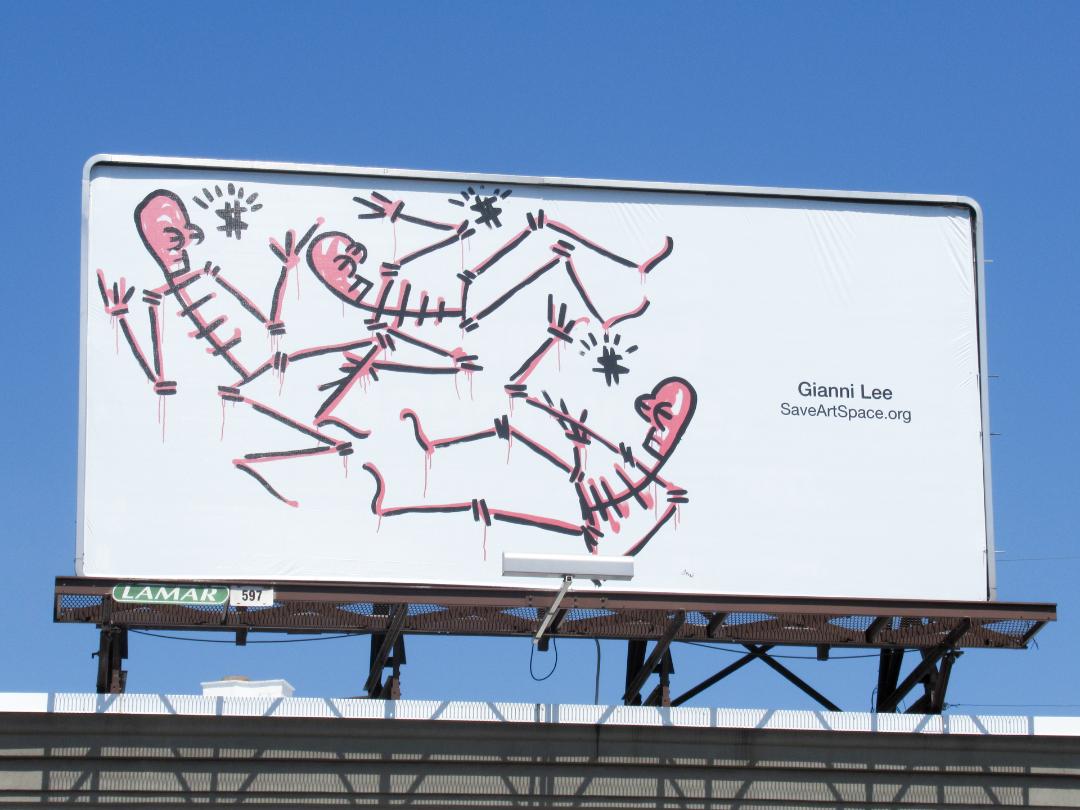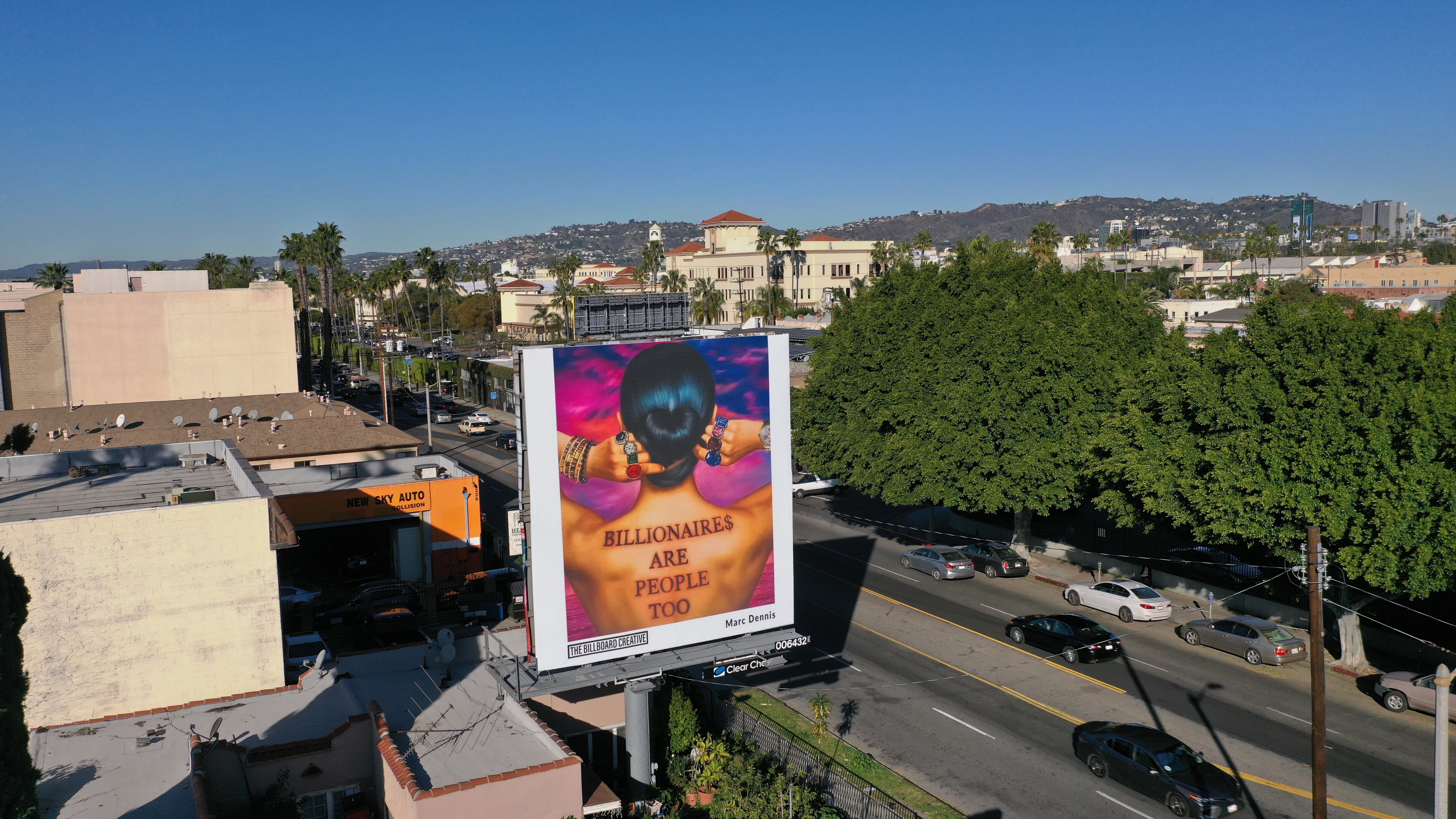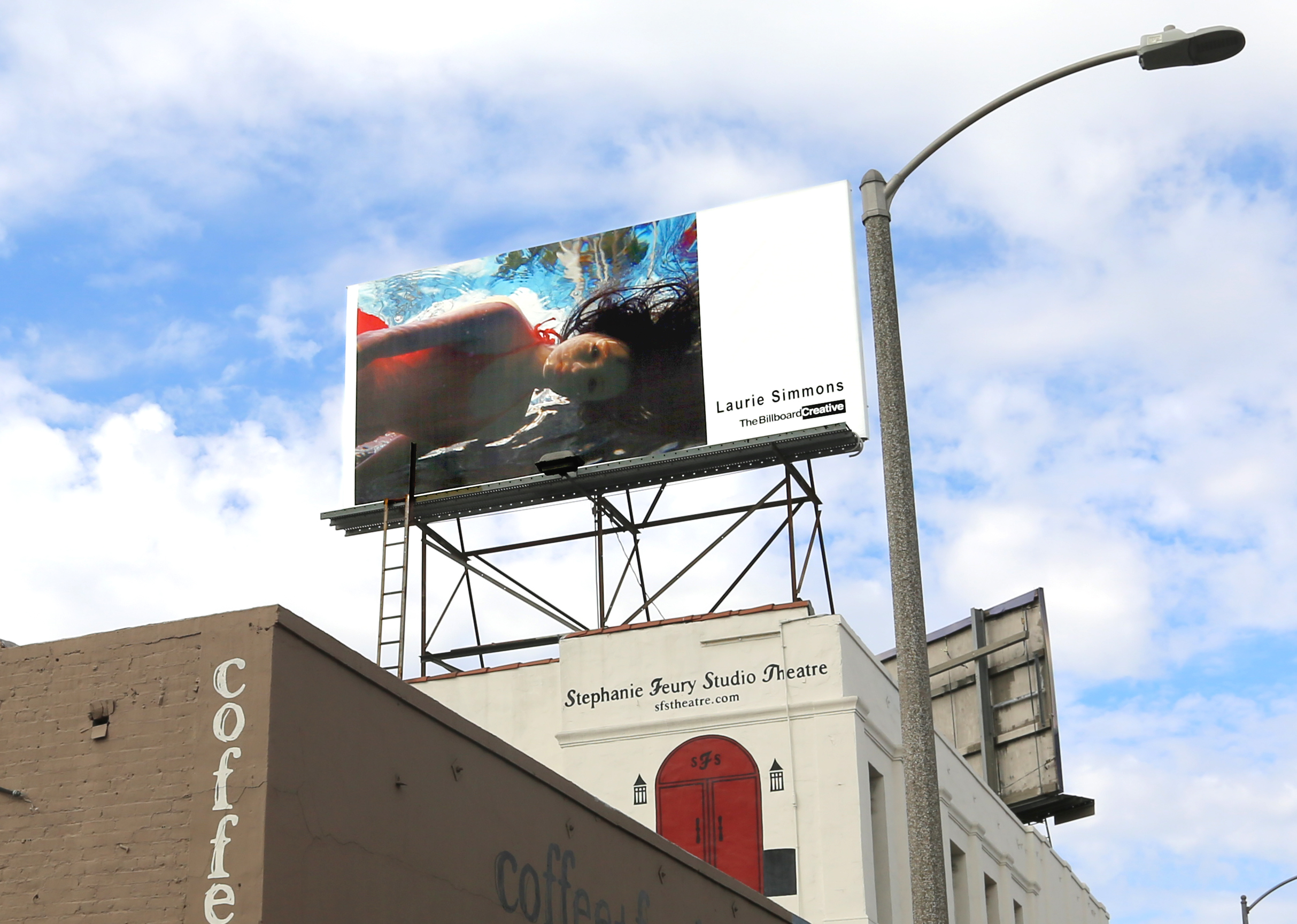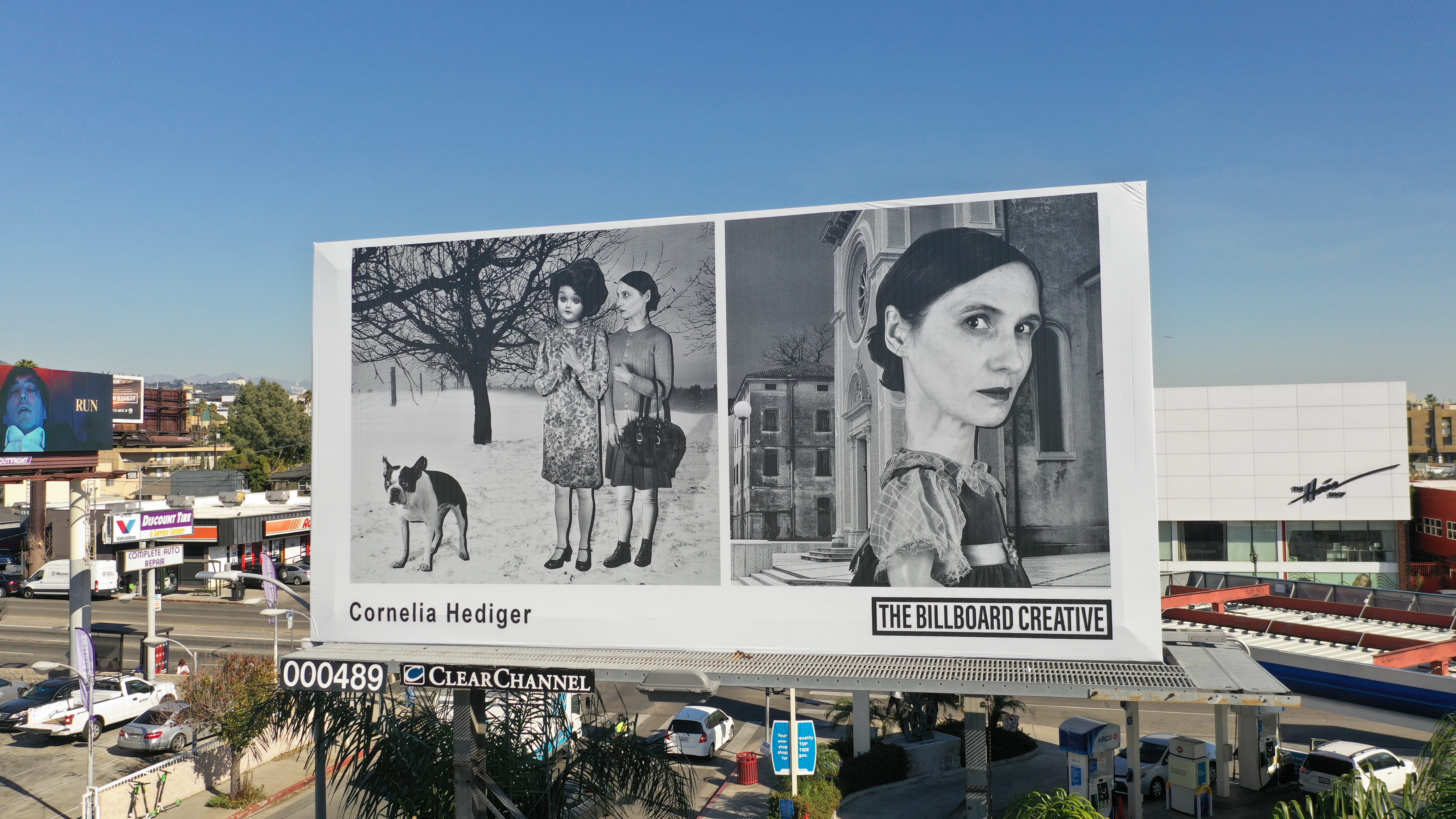
In LA, the two tallest things on most streets are palm and cypress trees, and billboards. For drivers and their passengers the skyline is a flickering carousel of large-scale solicitations and gigantic desert flora, one fundamentally ephemeral and social, the other oddly ancient. If you’d been in the city in February for the second edition of Frieze Los Angeles, you would have seen a second large-scale art event taking its place up there, mixed in with the Jurassic vegetation and the screaming hoardings.
The Billboard Creative is a non-profit organisation which hosts a series of “open-air exhibitions” on LA’s billboards, curating a selection of images from artists both well known (Ed Ruscha, Alex Prager) and relatively obscure. The images of these artworks are then printed at scale and papered up, where they are visible to hundreds of thousands of commuters, tourists, artists, homeless people, collectors and birds every day.

The experience of finding the jurassic, commercial and artistic sitting side-by-side is not an unusual one in LA. The famous La Brea Tar Pits, bubbling with ancient bones and even older goo, are practically in the grounds of the Los Angeles County Museum of Art, across the street from the Wilshire Galleria shopping centre and several tower blocks housing the offices of banks. In some ways it’s an oddly effective juxtaposition, and makes the choice of billboards for an exhibition vaguely plausible. After all, if there’s anywhere on earth where art is most “commercial”, commerce most “artistic”, and where both are profoundly shaped by a uniquely hostile yet inviting landscape, it’s Los Angeles.
“The billboard is a prime site for public art because it is designed to be visible to scores of people, without their having to go an inch out of their way to see it”
But it’s not just in LA that commercial advertising space is being co-opted to further dreams of accessible art. A similar non-profit founded in Brooklyn also aims to turn urban space into gallery space, installing 201 art billboards across ten major US cities. Save Art Space selects its works though an “open call” format, and predominantly features unknown or underrepresented artists. They believe their work has great potential for community enrichment and the creation of social value. The billboard is a prime site for public art because it is designed to be visible to scores of people, without their having to go an inch out of their way to see it. Good advertising is supposed to come to the consumer, after all.

The classification of these billboard programmes as “public art”, however, might raise a couple of critical eyebrows. After all, the final audience experience only has a little in common with seeing the fourth plinth, or a mural by Diego Rivera, Laure Provost’s Art on the Underground commission, or even Anish Kapoor’s much mocked “The Bean” (Cloud Gate, 2006). There is a difference between artworks in public spaces and images of artworks in public spaces. Nobody would call the endless posters promoting the next blockbuster exhibition “public art”. They do expose art to a wide audience, but perhaps in a way better classified as the publicizing of art.
There’s also the question of the contextual weight of the site. A billboard is so fundamentally commercial, and so universally understood as a means to a sale, that it’s hard to see it as neutral space for the public consumption of art. That is not to say billboards can’t be artistic, communicative or incredibly creative.
Many of the still posted “for your consideration” adverts mixed in with the Billboard Creative show in LA were visually and conceptually distinct from the traditional film poster, with cutouts or special effects pushing the boundaries of the allotted space. There’s a whole podcast dedicated to creative billboard design. My favourite billboard was along an interstate in Mississippi. It declared with fantastic cosmic certainty “Batman Loves Jesus”. The boundaries between advertising and life are already fairly blurred.

It’s hard not to worry, though, that the form of “access” these initiatives provide is quite diluted—that the experience of an artwork, or an image of an artwork, seen from the street, mid errand, or from a car, mid traffic jam, is not quite the same as a first-hand experience in a space set aside for giving yourself up to an encounter with something “other’” The kind of encounter which changes you.
In 2013 Art Everywhere took famous and historical works of art to billboards around the UK, curated by the public who voted for the works they wanted to see. But can seeing top choice, John William Waterhouse’s The Lady of Shallott (1888) on a bus stop bring the same intensity of experience as seeing the work in person? Especially in today’s world of very flat, endlessly reproduced images, it can end up falling short.
“Advertising and commercial culture has inspired more than its fair share of derivative, critical, curious, playful, and interrogatory art works”
Art made for billboards generally fares much better in terms of impact, as it takes the nature of the site into consideration. Steve McQueen’s latest large-scale work saw thousands of school photographs plastered across the country, to the delight of commuters everywhere. As Elephant recently found out, the children themselves were markedly more impressed by the billboards than by the accompanying exhibition in the Tate, which in and of itself says something about our responses to the billboard as a site and space.
On a smaller scale, playing on the connection between billboards and commerce, Slade student Ella Laurie has created a billboard in Hoxton which also functions as a shop window and gallery, showcasing a different purchasable artist-created t-shirt in response to what she felt was a lack of engagement with young local artists and a disconnect from the realities of advertising and sales.

Many artists have actively engaged with billboards as spaces and contexts for site specific work, and advertising and commercial culture has inspired more than its fair share of derivative, critical, curious, playful and interrogatory art works, perhaps none more iconic or ambivalent than those by Barbara Kruger. Kruger, whose work exists in a notoriously ironic dialogue with the hyper-commercial brand Supreme, frequently executes her work at billboard scale.
Her most recent “questions” series, currently also up around LA, poses a series of open-ended conundrums to its audience in typically arresting style. It is work that is conscious of its site and its context, and makes use of them without being diluted. The encounter is more real and visceral by virtue of its association with billboards than it would be in a gallery.
Art on billboards is not as simple a solution to the accessibility problem as it may at first seem. It has its benefits: boosted engagement across a broad spectrum demographic, a quite literal increase in the visibility of artworks, and the perhaps overlooked fact that having art on billboards is certainly better than having ads. On the other hand, it’s a bit of a band-aid fix.
More investment in commissioned public art; more open call shows and touring exhibitions; or subsidised travel to and from artistic centres would be deeper and more impactful for generations to come. While we live in the world we do however, billboard art might be the best option we have. And it is fun to see a large Laurie Simmons photograph emerge unexpectedly from a thicket of primeval vegetation and bristling commercialism.





